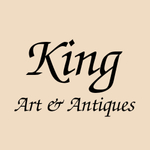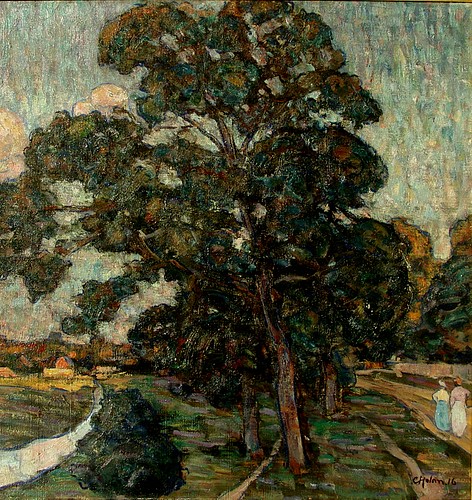Ludwig Knaus, Hunter in Landscape & Girl, etching, Listed German
About Auction
Apr 30, 2024 - May 13, 2024
In this Auction King Art presents a variety of Paintings & Drawings in the price range of $100 to $1500 including original paintings and prints, Jewelry, Fine Silver, Sculpture & Furniture King Art & Antiques kking15259@aol.com
- Lot Description
This Etching is so lovely, The image is 8"H by 5.5"W on a sheet of paper 12"H by 9 3/8"W. It is signed with his monogram LL in the plate and was in the collection of a curator at the Marquette University Art Museum in Milwaukee. Some slight imperfections and smudges on paper but etching itself in good condition Ludwig Knaus Born: 1829 - Wiesbaden, Germany, Died: 1910 Ludwig Knaus (5 October 1829 - 7 December 1910) was a German genre painter of the younger Düsseldorf School of painting. He was born at Wiesbaden and studied from 1845 to 1852 under Karl Frederick Sohn and Friedrich Wilhelm Schadow in Düsseldorf. His early works, such as The Gamblers in the Düsseldorf Gallery, are in the manner of that school, being dark and heavy in color. He studied in Paris. In 1853 his Morning after the Kermess received the second gold Medal of the Salon and made him a celebrated painter. Except for a year's study in Italy he remained in Paris until 1860. His chief works of this period include The Golden Wedding, The Baptism, The Promenade, purchased for the Luxembourg. From 1861 to 1866 he practiced at Berlin, producing such works as Boys Playing Cards, Looking for a Bride (Wiesbaden Museum), and His Highness on His Travels. The next eight years of his life saw the production of much of his best work, including The Children's Festival (Nation Gallery, Berlin), In Great Distress, and The Village Prince. From 1874 to 1883 he was professor at the Royal Prussian Academy, Berlin, continuing to reside in that city until his death. Among the most important works of his last period were: The Holy Family and The Road to Ruin, both painted in 1876 and now in the Metropolitan Museum of Art, New York; Behind the Curtain (1880), Dresden Gallery; The Rag Baby (1880) and A Village Festival (1881), both in the Vanderbilt Collection, Metropolitan Museum, New York; and A Duel.During his last period, Knaus also painted a series of "Idyls," with nudes in a rather classical style, of which an important example is in the Wiesbaden Museum. The most famous examples of his portraits, which are genre in character, are those of the scientist Hermann von Helmholtz and the historian Theordor Mommsen, both in the National Gallery, Berlin.Among his many distinctions were the great gold medal of the Berlin Exhibition of 1861 and the grand medal of honor at the Paris Exposition of 1867. He was a member of the Berlin, Munich, and many other academies; an Officer of the Legion of Honor and a Knight of the Prussian Order Pour le Mérite. Possibly, his most famous work is Girl in a Field (1857).
Condition
“Good some imperfections in paper around edge but not on etching,”
- Shipping Info
-
Shipping within the contingent USA is included in the sales price except listed otherwise. Any overseas shipping will be negotiated between buyer and seller and paid by buyer. Shipping will be insured and shipping is on Monday & Tuesday to avoid over the weekend storage in transit warehouse
-



 EUR
EUR CAD
CAD AUD
AUD GBP
GBP MXN
MXN HKD
HKD CNY
CNY MYR
MYR SEK
SEK SGD
SGD CHF
CHF THB
THB



